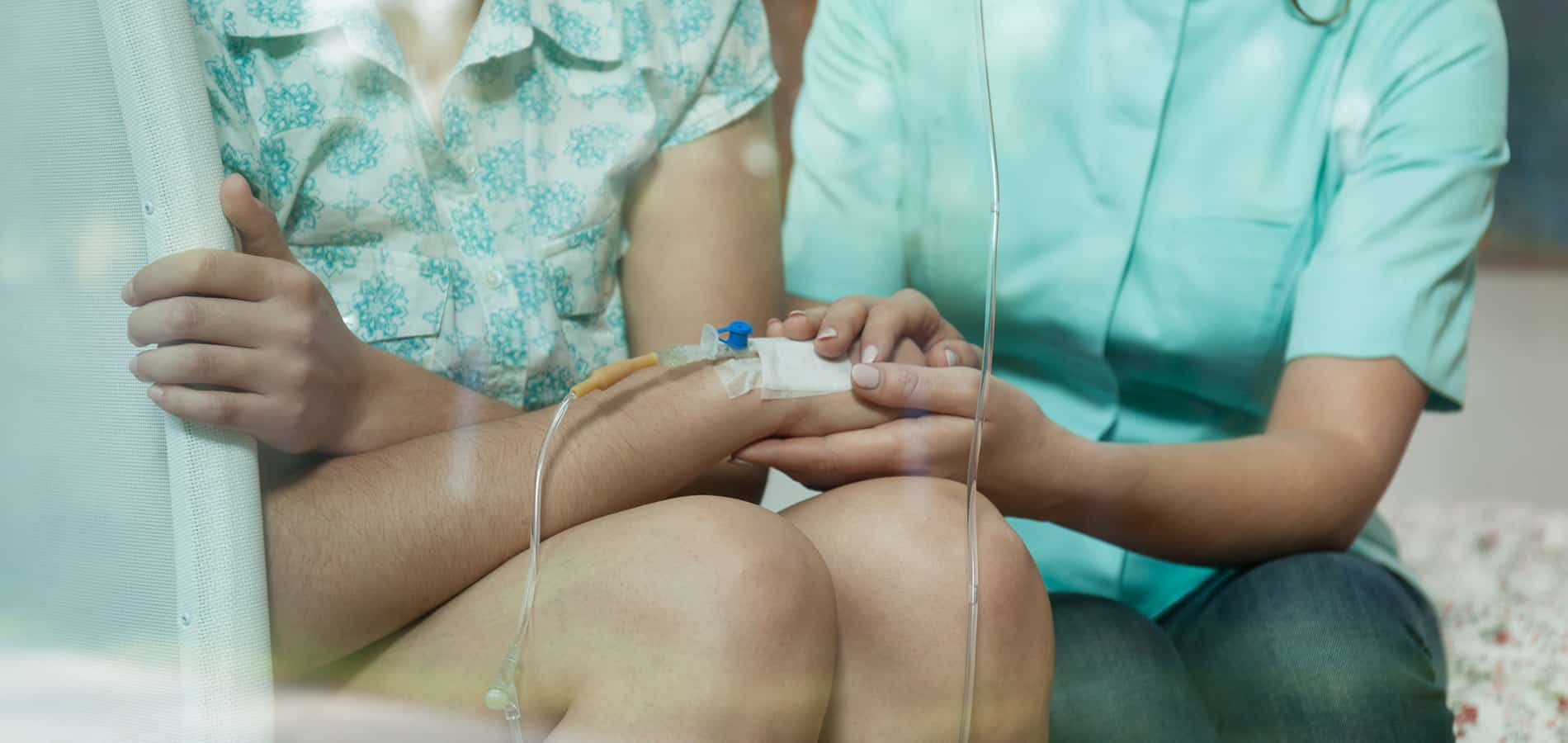
Palliative and hospice care
Palliatiivisen hoidon päämäärä on helpottaa oireita ja parantaa sairastuneen elämänlaatua. Hoitoa voidaan antaa sairauden missä tahansa vaiheessa, mutta edenneessä syövässä palliatiivisen hoidon avulla sairastunut voi elää pidempään ja mukavammin, vaikkei syöpää voidakaan parantaa. Vaikka taudin etenemiseen ei enää voida vaikuttaa sen aiheuttamia oireita voidaan hoitaa ja yrittää pitää sairastuneen elämänlaatu mahdollisimman hyvänä.
Palliative care
Even if the progression of the disease can no longer be controlled, the symptoms caused by the disease can be treated and an attempt can be made to keep the patient’s quality of life as good as possible.
Palliative care is about more than just controlling pain and nausea. Treatments can also reduce or eliminate symptoms. For example, radiotherapy can shrink a tumour so that it no longer presses on surrounding tissue or nerves and causes pain.
Palliative treatment can last for years in many cases. Many cancers are chronic, meaning that they are not cured, but they do not progress or are at least controlled by medication.
The decision to stop curative treatment is made by a doctor in a specialist hospital. A referral from the treating doctor is needed to move to palliative care. Palliative care may be provided by a home care agency or a hospice.
Care in the last weeks and days of life is called hospice care.
Hospice care
Care for a patient close to death can be provided in the patient’s home, a health centre, a hospice or a hospital.
If hospice care is provided at home, family and friends look after the patient’s basic needs. Medical care is provided by home nursing. If necessary, the patient is given equipment to take home, such as a hospital bed and a pain pump. Home care requires a care plan drawn up by the doctor and home nurses on what to do in different situations. Patients who are very unwell can be treated at home.
Hospice care at home can be facilitated by a day hospital, such as the Terhokoti in Helsinki. Patients can visit the day hospital every week to meet other patients, nurses and doctors. At the same time, relatives or friends caring for the patient can rest.

Hospices in Finlnad
If home care is not possible, the patient is admitted to a hospice ward, either in a health centre, a hospice home or a hospital. Many people are admitted to an inpatient unit when the symptoms of their illness get worse or when it becomes difficult to move around and wash at home. Inpatient care is also a good option when caring for a seriously ill patient at home has exhausted the family.
A nursing home is a place where you can go if you have a doctor’s referral and the municipality will pay for it. Hospices prefer to admit young people with families, as they are well equipped to deal with children.
You can also be admitted as a private patient without a referral. Hospices also provide home care services.
There are four hospices in Finland:
- Terhokoti Helsinki
- Karinakoti in Turku
- Pirkanmaa Nursing Home in Tampere
- Hoitokoti Koivikko in Hämeenlinna, Finland
You can apply to hospice care homes from all over Finland. For more information about services, contact the hospices directly.
Read more

Loved ones’ grief
The death of a loved one and the ensuing grief is a long process with many stages. The closer the patient is to you, the harder it is to let go.
Read article
Supporting a person who is ill
Seeing a loved one suffering and in pain can make you feel helpless and insecure. You both have your own suffering to deal with. You would like to be there to support and help them, but you don’t know how or in what way.
Read article
When death is near
An incurable illness and the awareness of approaching death inevitably affect your feelings and thoughts.
Read article